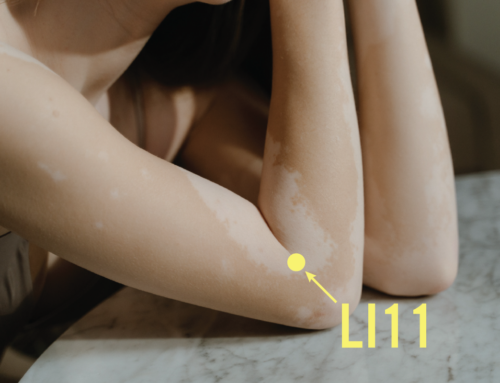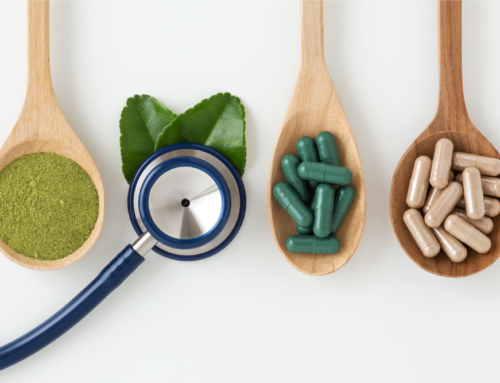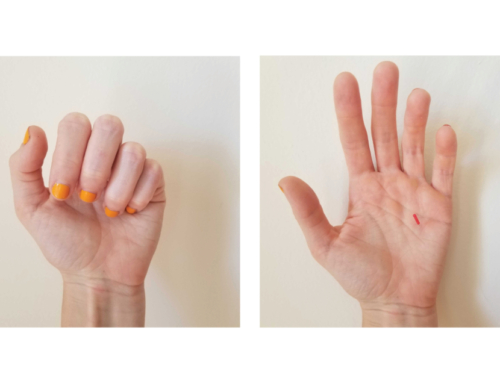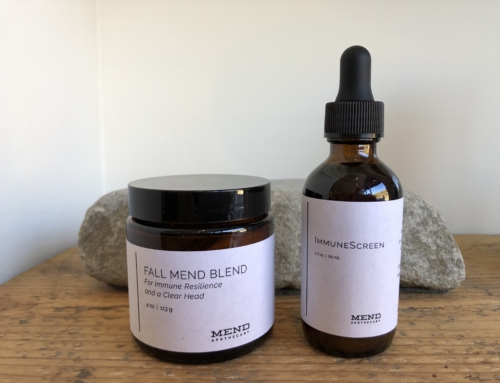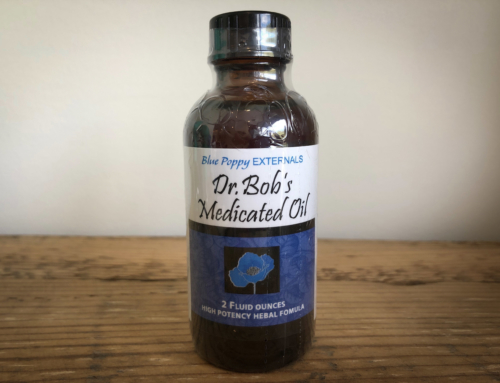Migraines are one of the most debilitating neurological disorders worldwide. A crippling headache, migraines are known for their intense, throbbing or pulsating head pain coupled with light sensitivity, nausea and vomiting, with possible auras or flashes of light. Notably, they strike one side of the head unlike other headaches.
What causes such agony? While a medical explanation is somewhat limited, it’s believed that a complex combination of neurological, hormonal, vascular, and metabolic malfunctions are to blame. Genetics may also play a role.
Ultimately, the best way to combat migraines is to prevent them from happening in the first place. The next step is to have a plan for when migraines strike. While there are a plethora of medications for both the prevention and acute treatment of migraines, many of these treatments have their share of side effects. Here we offer a way to treat migraines naturally.
Acupuncture
For acupuncturists, both internal and external factors are assessed to understand the cause and type of migraine. External factors such as wind, cold, heat, and damp environmental conditions can affect qi (vital life energy) and blood flow. Internal factors are tied to one’s lifestyle such as foods, sleep and stress which can throw off a body’s natural yin/yang balance. While considering both the internal and external factors, the overall goal is to bring harmony back to the body, no matter the cause.
In preventing and combatting migraines, acupuncture helps to:
- Reduce tightness in the neck (a common precursor to migraines)
- Stimulate the release of endorphins to help reduce pain and create feelings of wellbeing
- Promote healthy blood circulation by regulating inflammation as well as chemicals in the brain that control the constriction and dilation of blood vessels. When blood vessels constrict or narrow, migraine symptoms diminish..
- Reduce stress levels and encourage relaxation by modulating hormone levels. The hormones cortisol, serotonin, noradrenaline and dopamine determine how the body responds to stress; when balanced, your body adapts to stress more efficiently. An imbalance in serotonin levels in the brain is linked to the onset of migraines.
- Improve immune function which helps control inflammation and the production of prostaglandins (pain-promoting hormones).
Recent research has shown promise. In a 2016 Cochrane review, over half of the participants saw a reduction in headaches. And in a 2022 systematic review, it was concluded that acupuncture for migraines can reduce pain, improve quality of life, and/or decrease rescue medication. Safe, long-lasting, and effective, the review recommends acupuncture for those suffering from migraines as an alternative or adjunct to drug treatment.
When using acupuncture for migraine prevention, the key is consistency. Depending on the symptoms and situation, an acupuncturist may recommend weekly or bi-weekly treatments for a given amount of time. Just as one treadmill run doesn’t shed pounds, it takes more than one acupuncture session to see results.
Herbal Medicine
Herbal remedies address the underlying imbalances contributing to migraines. Herbal formulas are customized based on the individual’s specific pattern of disharmony. These formulas may include herbs known for their ability to relieve pain, soothe tension, and regulate the flow of Qi and Blood. Herbal medicine can be a powerful adjunct therapy in managing migraines, particularly when combined with acupuncture.
Know Your Triggers
Another way to prevent migraines is to get to know common triggers. Unfortunately, there are quite a few:
- Emotional triggers, particularly stress, as well as anxiety, tension, shock, depression and excitement
- Drinks such as alcohol, especially wine, and beverages with too much caffeine
- Sensory stimuli such as bright or flashing lights and strong smells
- Sleep changes such as getting too much or too little sleep
- Intense physical exertion
- Changes in weather or barometric pressure
- Medications
- Hormonal changes related to the menstrual cycle
- Excessive screen time and/or poor posture while working
- Foods (see below) and food additives like aspartame and MSG
- Missed, delayed or irregular meals, as well as dehydration
As for food triggers, there are also many….
- Baked goods with yeast, such as sourdough bread, bagels, doughnuts, and coffee cake
- Cheeses like blue, brie, cheddar, feta, mozzarella, muenster, parmesan and swiss
- Chocolate
- Cultured dairy products (like yogurt and kefir)
- Cured meats (like bacon, sausage, ham, and deli meats)
- Fruits or juices such as citrus fruits, dried fruits, bananas, raspberries, red plums, papayas, passion fruit, figs, dates, and avocados
- Nuts and nut butters
- Pickled foods like olives, sauerkraut, and pickles
- Soy products (miso, tempeh, soy sauce)
- Tomatoes and tomato-based products, like pizza
- Vegetables like onions, pea pods, some beans, corn, and sauerkraut
- Vinegar
Not all people are affected by the above triggers; every body reacts differently. If one is experiencing migraines, it’s important to consider both the internal and external influences that can be the cause. For this, a migraine diary can be helpful. Track migraines by taking note of the start/end dates and times, symptoms, location of pain, potential triggers, remedies, etc. Etsy has some nice tracker sheets, if looking to use a form. In addition to pinpointing triggers, a migraine diary can be helpful for practitioners in their treatment.
In the Moment
When prevention is not enough, it’s important to turn to remedies that can help alleviate the pain. Sometimes there’s an internal knowing of what to do: dim the lights and keep things quiet. There’s also cold packs, staying hydrated, a bit of caffeine, ginger, and using relaxation techniques such as breathing exercises.
Try Acupressure
In the midst of a migraine or headache, we may intuitively massage or apply pressure to areas where we notice pain. This is akin to using acupressure which promotes blood circulation and helps relieve physical tension. However, there are many specific acupressure points that can be helpful in mitigating headache pain and nausea. To do acupressure, get comfortable, close your eyes, and massage the point in a circular motion for 15 to 20 seconds. You should use firm pressure, but don’t press so hard that it’s painful. Below, we offer some acupressure points that may be helpful in alleviating headaches and nausea:

___
- LI-4 (Hegu): Where the thumb and index finger join together; recommended for headaches and migraines, particularly after onset.
- GB-20 (Fengchi): At the juncture of the neck and skull on top of the muscle running from the back of the head to your shoulders; for headache relief.
- PC-6 (Nei Guan): Found in the inner wrist, about three fingers away from the palm of the hand.; for headache relief and nausea.
- M-HN-9 (Taiyang): At the tender depressions of the temples; for headache relief.
- M-HN-3 (Yintang): In the center of your forehead at the halfway point between your eyebrows; relaxes the sympathetic nervous system which may help relieve headaches.
- LIV-3 (Taichong): At the depression near where the big toe and the long toe meet; helps relieve head pain.
If experiencing frequent migraines, be sure to discuss this with your healthcare provider and/or acupuncturist. In the meantime, being aware of preventative measures, triggers and home remedies is a good place to start.
Sources:
“Acupuncture for Migraines.” Morningside Acupuncture NYC, https://www.morningsideacupuncturenyc.com/blog/acupuncture-for-migraines. Accessed 14 June 2022.
Booth, Stephanie. “Food Triggers for Migraines.” WebMD, https://www.webmd.com/migraines-headaches/migraine-trigger-foods. Accessed 14 June 2022.
Gurarie, Mark. “Here’s What You Need to Know About Acupressure for Migraines.” Verywell Health, https://www.verywellhealth.com/migraine-relief-pressure-points-5205811. Accessed 14 June 2022.
“Migraine – Causes.” Nhs.Uk, 3 Oct. 2018, https://www.nhs.uk/conditions/migraine/causes/.
Sonmore, Steven. Treating Migraines: Chinese Medicine Approach – Complete Oriental Medical Care. 14 Apr. 2022, https://www.orientalmedcare.com/2022/04/14/migraine-acupuncture-treatment/.
“Ways to Get Rid of a Headache Quickly.” WebMD, https://www.webmd.com/migraines-headaches/5-ways-to-get-rid-of-headache. Accessed 14 June 2022.
Weber, Kevin. Is Too Much Screen Time the Cause of Your Headache? https://wexnermedical.osu.edu/blog/is-too-much-screen-time-the-cause-of-your-headache. Accessed 14 June 2022.

